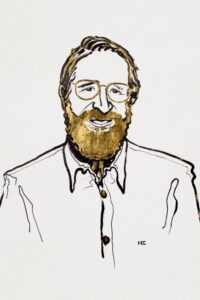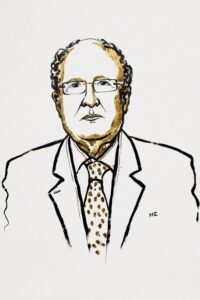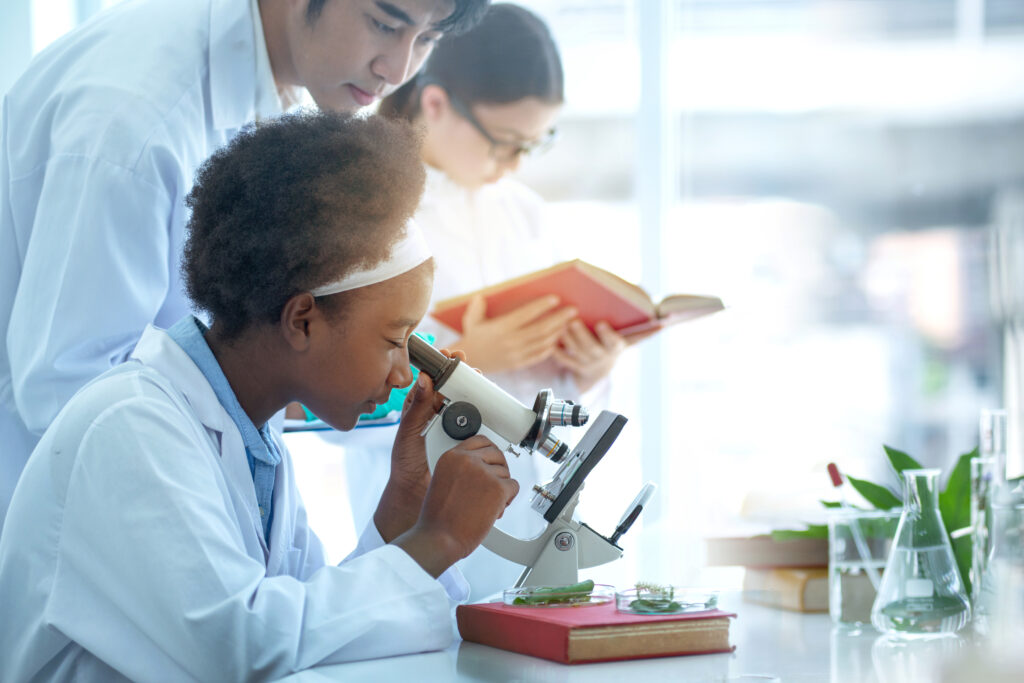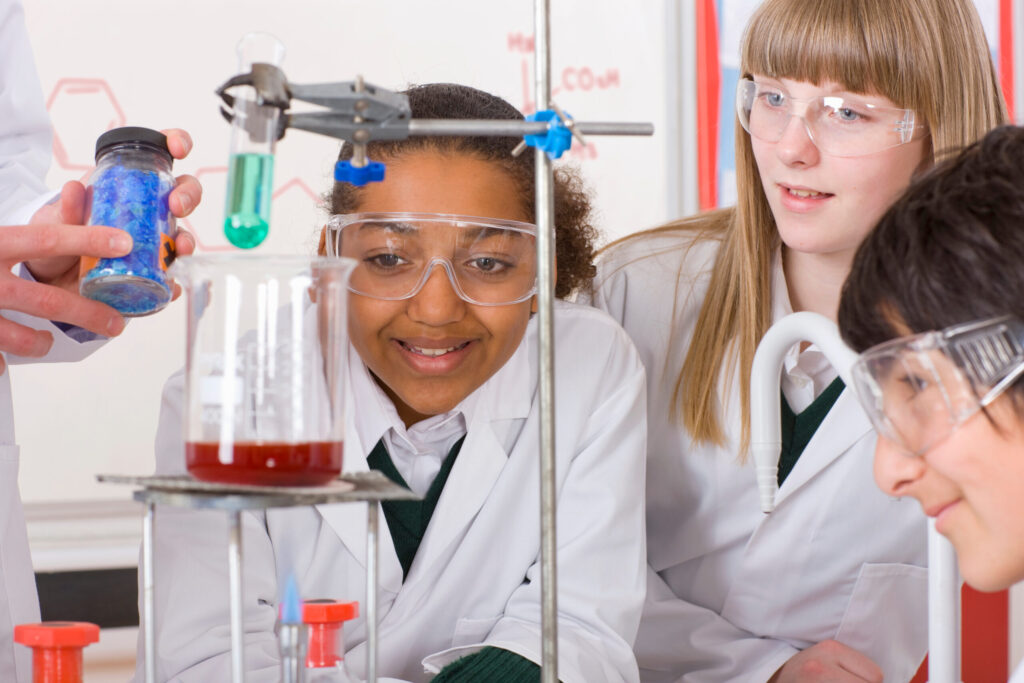The study of living organisms is biology, but the processes of life are carried out in cells by molecules. The study of those molecules and their reactions is a branch of chemistry called biochemistry. The 2018 Nobel Prize for Chemistry has been awarded to scientists who have speeded up evolution to produce molecules in living cells that are of use to us.
Half of the prize goes to Prof. Frances H. Arnold. She is only the fifth woman, and the second in the last fifty years, to be awarded the prize. Arnold was born in Pittsburgh, USA in 1956. She went to Princeton University to study mechanical and aerospace engineering. During her course she did work on sustainable energy sources, as well as demonstrating against the Vietnam War. For her PhD at Berkeley in California she moved into chemical engineering and became interested in biochemistry. In 1986 she joined Caltech (California Institute of Technology) where she remains as the Linus Pauling Professor of Chemical Engineering, Bioengineering and Biochemistry. At Caltech, Frances Arnold began the work on the directed evolution of enzymes that has won her the prize.
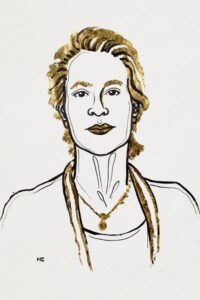
Ill. Niklas Elmehed. © Nobel Media
Frances H. Arnold – Facts – 2018. NobelPrize.org. Nobel Media AB 2018. Fri. 12 Oct 2018.
[https://www.nobelprize.org/prizes/chemistry/2018/arnold/facts/]
Enzymes are large protein molecules made up of thousands of amino acid groups of atoms linked together. The order of the amino acids is determined by the genetic code in the cell’s DNA. The protein molecules are folded into a shape that allows them to carry out the task they have. Small reactant molecules fit into the gaps and crevices in the enzyme molecule so that they can react. Each enzyme acts on a specific reaction which is needed for the cell to live. The enzymes used by cells have evolved over billions of years. We have made use of various enzyme reactions, for example, an enzyme in yeast turns glucose into carbon dioxide and alcohol. Apart from being in beers and wines the alcohol is a useful solvent and fuel.
Arnold’s “directed evolution” is a way of producing enzymes to carry out reactions which do not occur naturally or to react in unusual conditions. First, she identifies an enzyme produced by bacteria that could possibly be modified. The section of DNA that codes for the enzyme is extracted and mutated. The altered DNA is reinserted in the bacteria which are then cultured. Tests are done to see if the bacteria are producing the desired enzyme. Many are rejects but those which show some success are used to repeat the process.
Willem Stemmer, a Dutch scientist did similar work in the 1990s showing that parts of genes could be shuffled before being inserted into bacteria. The bacteria then produced new enzymes. Stemmer died in 2013.
Arnold’s first success in the early 1990s was with an enzyme that breaks down casein, the protein in milk. She aimed to produce an enzyme that was active in an organic solvent instead of water. After three repeats of her process of directed evolution, she had an enzyme that worked 250 times better in the solvent than the original enzyme. She has gone on to develop many other enzymes by her method some of which may be used to produce synthetic fuels for the future.
The other half of the prize is shared between George P Smith and Gregory Winter. Smith was born in 1941 in Connecticut, USA. Following a degree in Biology he studied Bacteriology and Immunology for a PhD at Harvard University. In 1975 he started work at the University of Missouri.
Ill. Niklas Elmehed. © Nobel Media
George P. Smith – Facts – 2018. NobelPrize.org. Nobel Media AB 2018. Fri. 12 Oct 2018.
[https://www.nobelprize.org/prizes/chemistry/2018/smith/facts/]
During the 1980s, work on identifying which bits of DNA coded for particular proteins was still slow. Smith had the idea of adding the gene for an unknown protein to the short loop of DNA in a bacteriophage (viruses that attack bacteria). The virus inserts its genes into a bacterium’s DNA and produces many copies of itself. Smith’s phages used the protein of the added gene in their coating. Antibodies attach to the proteins on the surface of the virus enabling the added protein to be identified. Smith called his method “phage display”.
Gregory Winter was born in 1951 in Leicester, UK. After school in Newcastle he went to Cambridge University to study Natural Sciences. He stayed at Cambridge where he joined the Medical Research Council for a PhD in Molecular Biology. He extended George Smith’s work with phages.
Ill. Niklas Elmehed. © Nobel Media
Sir Gregory P. Winter – Facts – 2018. NobelPrize.org. Nobel Media AB 2018. Fri. 12 Oct 2018.
[https://www.nobelprize.org/prizes/chemistry/2018/winter/facts/]
The human body produces many different antibodies. They have receptors that attach to the proteins of invading viruses but not the molecules produced by the body itself. Winter added the DNA for the receptor of a particular antibody to a phage. The copies of the phage had the receptor on their surface. It bound to the same protein as the antibody. By mutating the antibody gene, he was able to produce phages that would strongly bind to a target protein.
In many auto-immune diseases such as arthritis, the body produces proteins that cause inflammation of tissues. In 2002, Winter used the directed evolution of the phages to develop the first drug, adalimumab, that would bind to these proteins and prevent damage occurring. It is hoped that many other diseases, for example Alzheimer’s, can be treated in the same way.
Arnold, Smith and Winter have received many awards for their work in biochemistry and had varied lives. Frances Arnold suffered the death of her first husband, the suicide of her second and the accidental death of one of her sons. She herself has been treated for breast cancer but still runs a lab at Caltech. George Smith is an emeritus professor at Missouri University where he is the first staff member to be awarded the Nobel Prize. He is a campaigner for the rights of Palestinians in Israel. Gregory Winter remained in Cambridge where he is now Master of his undergraduate college, Trinity. He has founded spin-off companies to make use of his discoveries and he became Sir Gregory in 2004. Now the three chemists have the ultimate accolade, the Nobel Prize. Their discoveries are being used to produce medicines, fuels and other substances that will be of benefit in the future.
Tasks
- Suggest reasons why Frances Arnold is only the fifth woman out of 177 chemists who have received the Nobel Prize for Chemistry.
- Investigate the lives of the five female winners of the Nobel Prize for Chemistry: Marie Curie (1911); Irene Joliot-Curie (1935); Dorothy Crowfoot Hodgkin (1964); Ada Yonath (2009); Frances Arnold (2018)
- Willem Stemmer made a similar breakthrough to Frances Arnold. Why wasn’t he awarded the Nobel Prize this year?
- Enzymes are often called “biological catalysts”. Explain what enzymes do.
- What differences are there between Frances Arnold’s “directed evolution” and the “natural selection” in Darwin’s theory of evolution.
- Why is Arnold’s method of producing “designer” enzymes of importance?
- Why are Smith and Winter sharing half the prize?
- Many illnesses common today are thought to be auto-immune diseases. Why is the Smith-Winter method of phage display important?
Sources
By Peter Ellis

